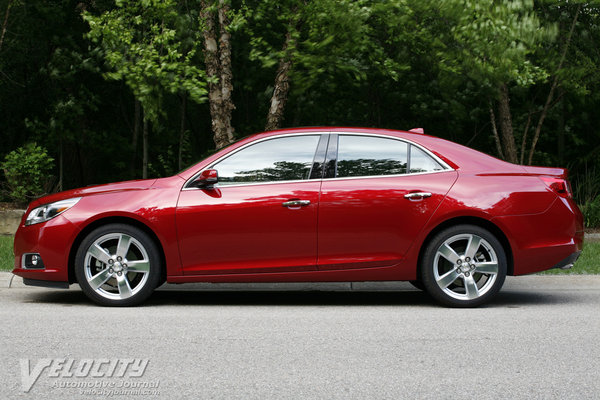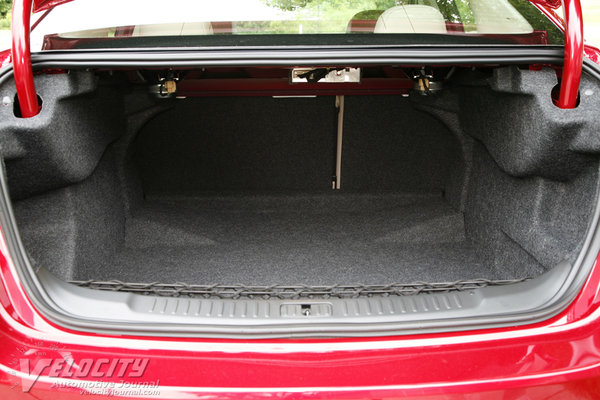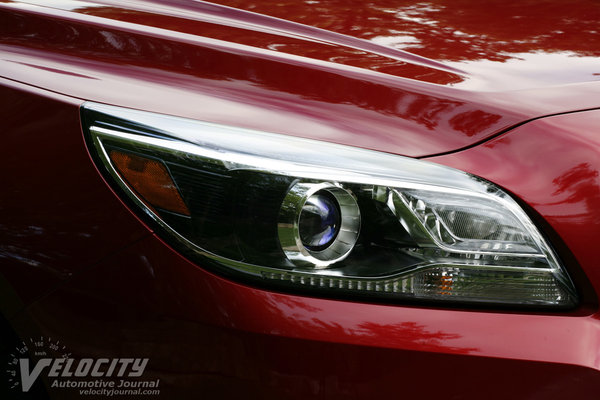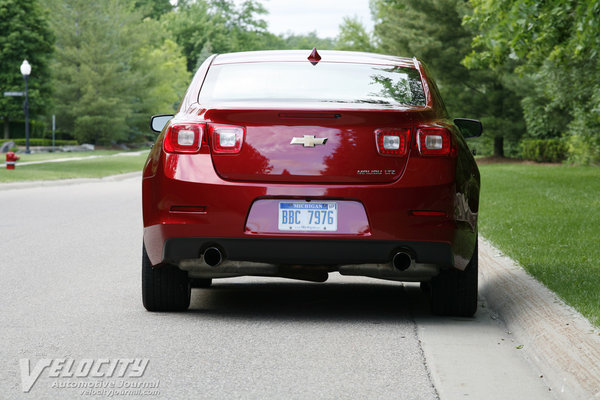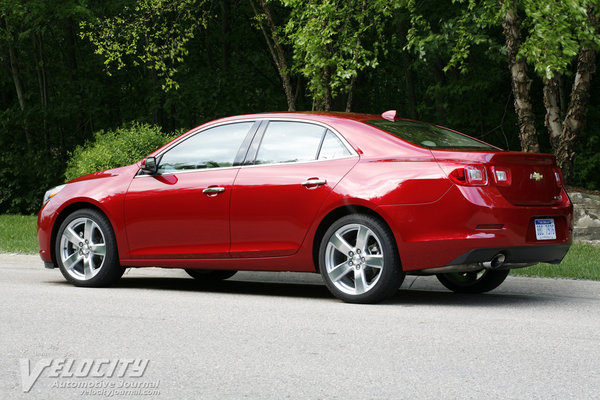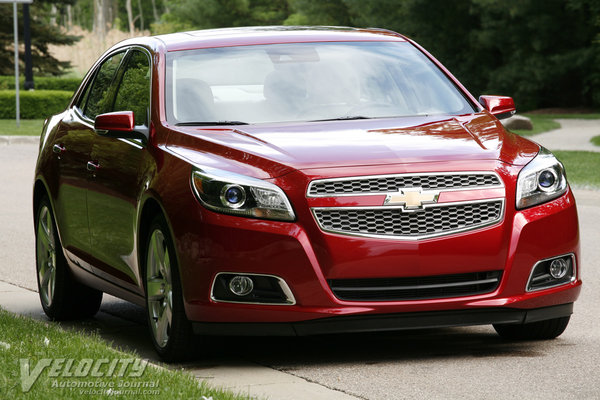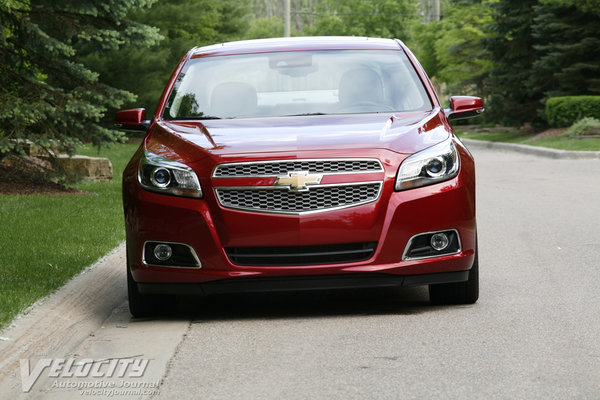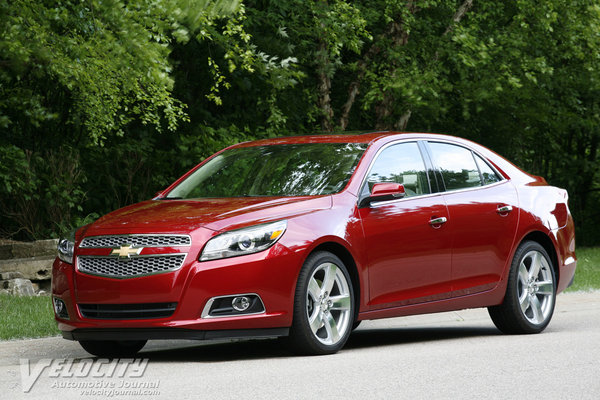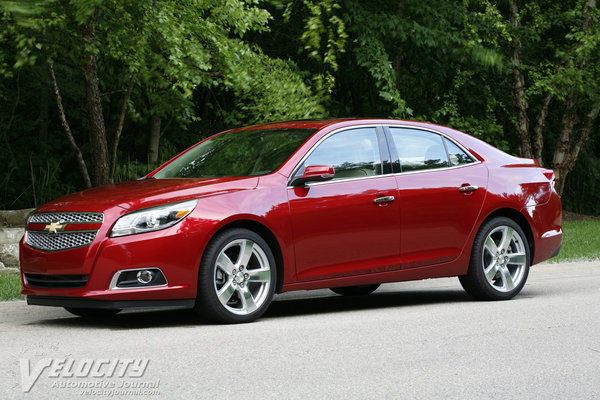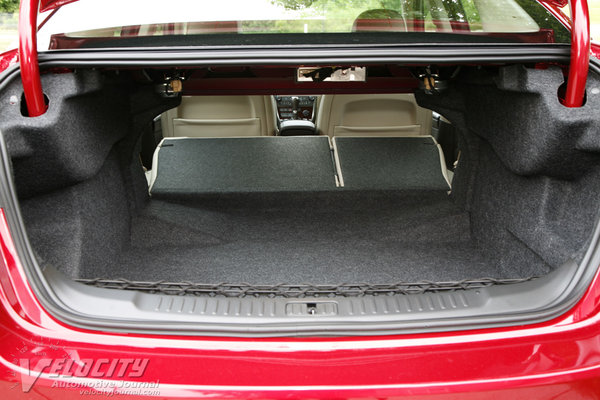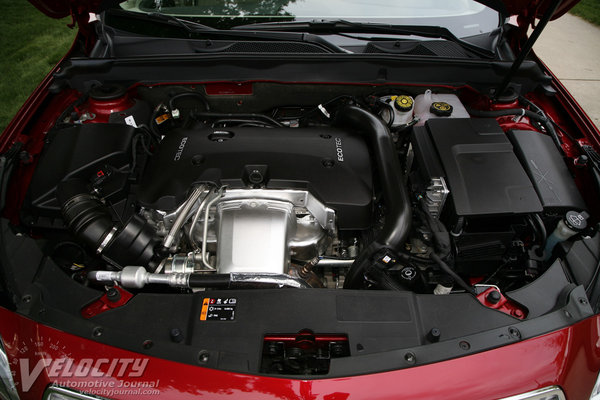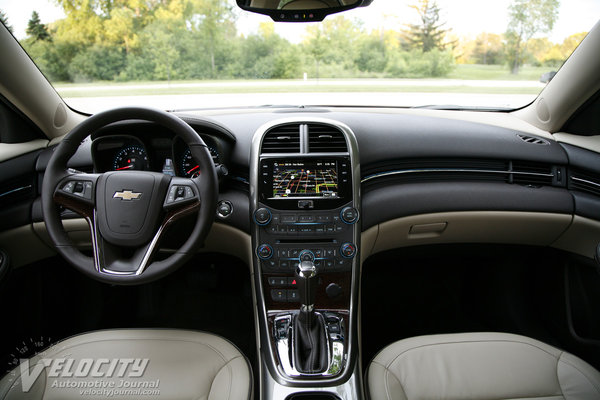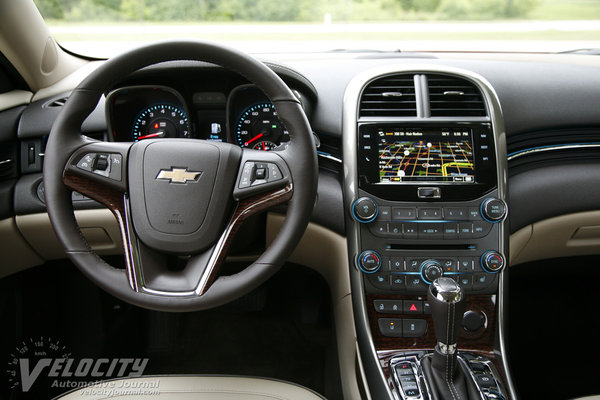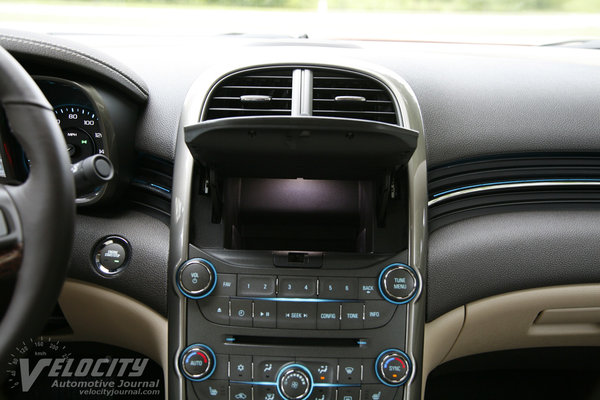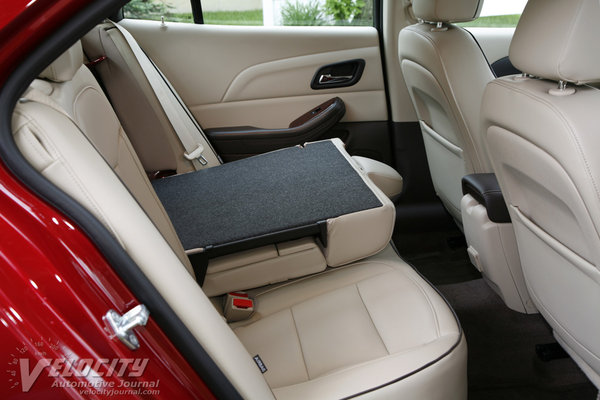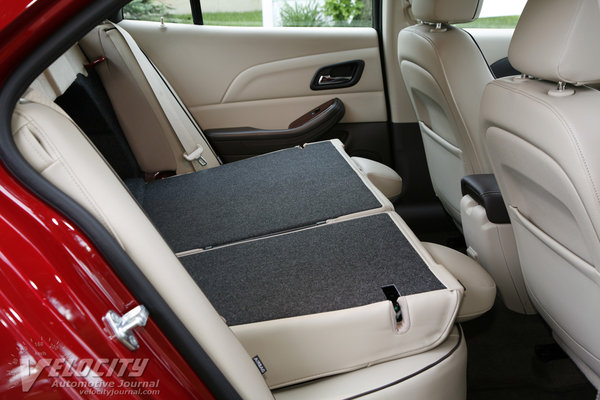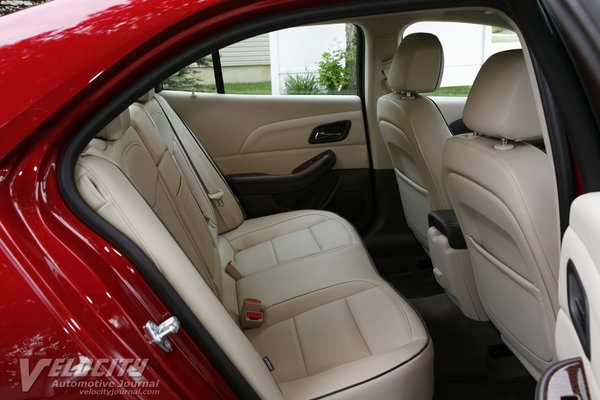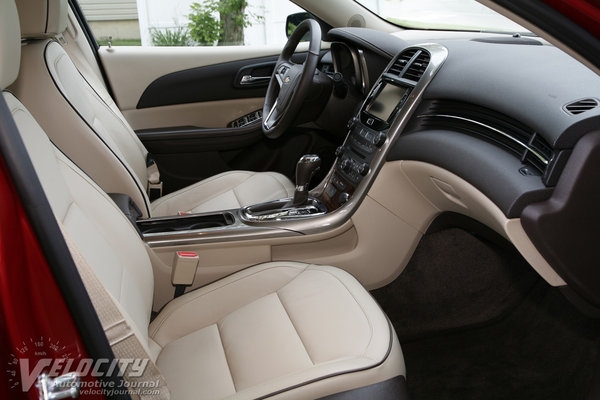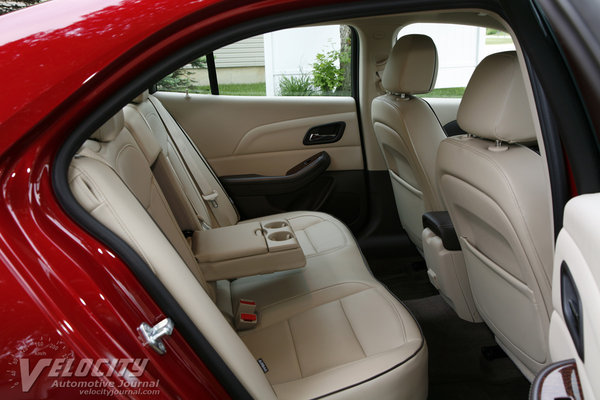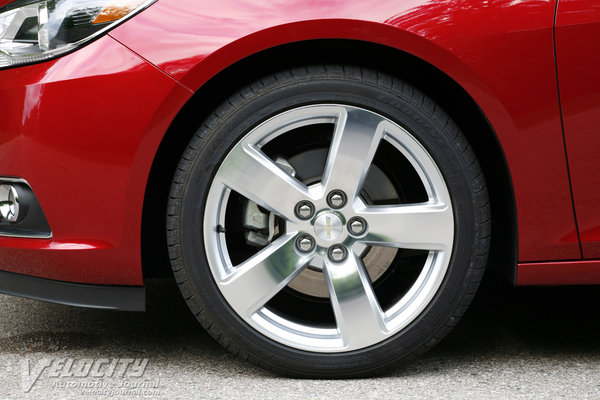2013 Chevrolet Malibu LTZ
07/03/2013
Shahed Hussain
The Malibu's renaissance began with Chevy's 2007 redesign. Heavily revised again in 2012, the Malibu is headed for another minor update for the 2014 model year. Competition in this arena had heated up with the recent introductions of the new Honda Accord and Ford Fusion, pressuring Chevrolet to keep the Malibu current.
Chevrolet sells the Malibu in LS, LT and LTZ models, as well as the fuel-efficient Malibu Eco. A choice of three Ecotec 4-cylinder engines is available: a normally-aspirated 2.4L and 2.5L, as well as an optional 2.0L turbo. We tested the top Malibu LTZ with a MSRP of $29,700. Additional option packages boosted the sticker price to $34,595 including the $810 destination charge. Notable extras on our test vehicle were 19-inch alloy wheels, HID headlights, leather seats, navigation, Forward Collision Alert, Lane Departure Warning, rearview camera, and a Pioneer audio system.
Over the past few years, Chevrolet has upgraded interiors as each model in its lineup, so the Malibu has benefited from its recent redesign with soft touch trim, aqua ambiance lighting, and chrome accents. A "cocoa fashion trim" option adds contrasting dark brown dashboard fascia, door panels, and seat piping. Glossy simulated wood lines the center console and steering wheel spokes. Dual gauge clusters house the speedometer and tachometer, and smaller fuel level and coolant temperature gauges. Touch-sensitive controls next to the navigation display allow easy access to commonly used functions, but a careless swipe can change settings unintentionally. The display flips up to reveal a hidden storage compartment. Audio and air conditioning settings are adjusted via clearly marked buttons and knobs. Dual cupholders are located on the center console. The Malibu's electronic parking brake is located on the center console next to the shift lever.
Opting for the premium LTZ adds standard leather seats, along with seat heaters for the front passengers. During a 160-mile road trip, the 8-way power adjustable driver's seat with lumbar support provided exceptional comfort. The front passenger also benefits from same level of power adjustments. Lateral support is minimal, but the flat bolsters should accommodate larger occupants easily. Rear passengers have adequate legroom, and the outboard seating positions are nicely sculpted for comfort. However, the center passenger's rigid seatback makes short trips barely tolerable. Rear legroom is acceptable, but the 2013 Malibu loses just under an inch of rear legroom and about two inches of hip room compared to its predecessor. Despite the loss of rear passenger space, passenger volume grows to 100.3 cu. ft. from 97.7 cu. ft. compared to the previous generation Malibu.
Chevrolet expanded the Malibu's engine lineup with a new 2.0L turbo inline-4, optional in the LT and LTZ. Replacing the previous 3.6L V-6, the cast-aluminum DOHC four is rated for 269-bhp @ 5,500 RPM and 260 lb.-ft from 1,700-5,500 RPM. Chevrolet recommends premium fuel but it is not required. All Malibus are equipped with 6-speed automatics, although the Ecotec 2.0L turbo mates to the Hydra-Matic 6T70, instead of the 6T40 used with the 2.5L and 2.4L engines. According to EPA estimates, the Ecotec 2.0L should achieve 21/30 MPG (city/hwy.). We averaged 26-27 MPG on the highway, indicating that the EPA rating appears reasonable.
The Malibu's front suspension consists of MacPherson struts, coil springs, and stabilizer bar. At the rear is a 4-link independent setup with coil springs and stabilizer bar. Brakes are discs all around, with vented rotors in front. ABS and ESC (Electronic Stability Control) are standard. The rack-and-pinion steering is electrically-assisted with a quick 2.68 turns lock-to-lock. Our test vehicle had the optional 19-inch alloy wheels shod with P245/45R19 all-season Goodyear Eagle RS-A tires. The standard LTZ fitment is 18-inch wheels with narrower P235/50R18 all-season tires. The LTZ 2.0L curb weight comes in at 3,660 lbs., notably heavier than the 3,393 lbs. for the base Malibu LS.
Chevrolet positions the Malibu as a mainstream midsize sedan, but the Ecotec turbo turns this Chevy into a surprisingly potent 4-door. Midrange acceleration is impressive, although a slight delay in throttle response and a barely audible whine confirms that a turbo is in the engine bay. The Ecotec 2.0L revs smoothly to the 7,000 RPM redline, yet the fat torque curve replicates the flexibility of a normally-aspirated V-6.
In keeping with its mission as a family hauler, the Malibu's suspension tuning favors comfort over sport. Most road imperfections are absorbed by the soft springs and dampers, but sharp bumps thump through the stiff tire sidewalls. Skipping the 19-inch wheel option (included with the Electronics and Entertainment Package) should yield a more composed ride. At full throttle we noticed just a hint of torque steer through the steering wheel, but it is nonexistent in typical driving. On curving roads, the Malibu exhibits moderate body roll and understeer that fits into its mission as a relaxed cruiser. On the highway, the electrically-assisted steering requires frequent minor corrections to maintain lane position. In all fairness, most automakers have had difficulty tuning electric steering systems to respond as naturally as a hydraulic system. Offering an optional sport suspension with firmer damping would allow the Malibu's underpinnings to take better advantage of its turbocharged engine.
The Malibu's 4-wheel discs haul it down competently from high speed, but the softly sprung front suspension compresses down under hard braking. The optional Forward Collision Alert system flashes red LEDs and beeps when it senses a significant velocity difference between the Malibu and a vehicle immediately ahead. During our stint in the Malibu, we found that the collision alert system does work, but not as consistently as we expected. However, the Lane Departure Warning reliably beeped whenever it detected the Malibu crossing lane and shoulder markings. Both systems are included with the $395 Advanced Safety Package.
Chevrolet expended significant resources to redesign the Malibu, but in the brutally competitive midsize segment, peeling off customers from the Camry and Accord is difficult. The Malibu is a serious alternative to its Asian competition, yet potential buyers will find that the Chevy possesses no clear advantage in pricing or technology over comparable sedans from Toyota, Honda, Ford, and Nissan. Even so, the Malibu has progressed significantly to now rank in the top tier among midsize sedans.

